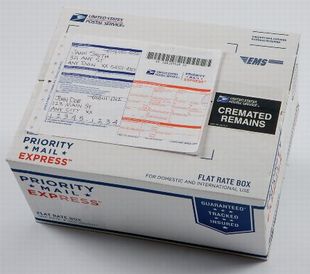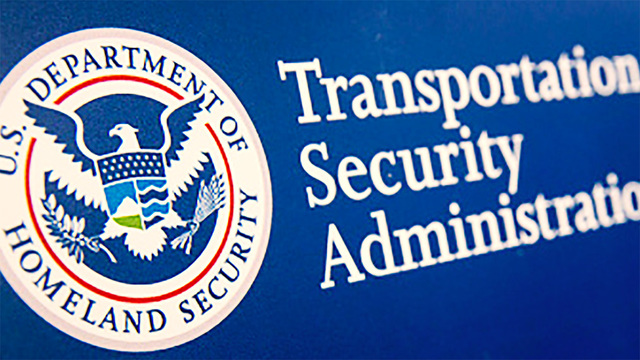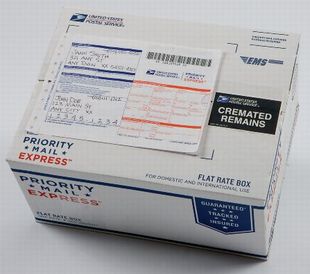Traveling by Plane or Shipping Ashes

Traveling By Plane or Shipping Cremation Ashes
With the heightened security surrounding air travel worldwide, flying with cremation ashes is still allowed but you do have to follow the guideline created by the T.S.A (Transportation Security Administration). Like other potentially sensitive materials, there are a few rules to follow (for your own safety) when carrying ashes onto an airplane, no matter your destination. If you plan to fly with cremation ashes, these tips will help you plan ahead and avoid unnecessary delays before taking to the skies.
Flying With Cremation Ash es
es
If you plan to board a plane with cremation ashes, advanced preparation may be required. Ashes aren't seen in the same class as standard luggage, so take the time now to learn what policies you'll need to know and what paperwork you'll need to prepare.
In the United States, most large, non-budget airlines will permit customers to fly with cremated remains as a carry-on item, but this is not a blanket policy. Before you purchase an airline ticket, research whether your airline of choice allows the transportation of ashes. If the information is not immediately evident, search the airline website for keywords like "cremated remains" or "cremated ashes." Airlines with cremation-friendly policies, like Delta and Southwest Airlines, tend to make this clear, so these details should not be hard to find. If there is nothing available online, call the customer service line to ask a company representative. please feel free to contact the TSA Contact Center at
1-866-289-9673.
If your chosen airline does not offer clear guidance on transporting ashes, book with one that does.
Traveling on Domestic Flights
When flying domestically, the Transportation Security Administration, or TSA, has jurisdiction over air transportation around the country. In order to keep passengers safe, the TSA has many strict rules related to what can and cannot be brought onto a plane, and how screening processes must be handled.
All items that are packed in carry-on luggage or shipped in the cargo hold must be able to be scanned. This includes urns for ashes, so be sure the urn you choose will satisfy this request. Interior contents must be clearly visible through the x-ray machine, so any urn that offers an opaque image will not be permitted to fly with you. So stone urns, metal urns, ceramic urns and any other material that is not easily xrayed will not be permitted. Plastic, cardboard, and most wood urns are good air travel. The TSA will not open any urns or examine human remains, even if granted permission, so ensure cremation ashes are packed properly prior to going through security.
On the day of your flight, arrive at least two hours before boarding begins to ensure you will have adequate time to clear security. While there shouldn't be any issues, TSA agents unfamiliar with customers transporting remains may cause delays in the process.
The TSA is in charge of air travel security, and that means that agents take their jobs seriously. Although your end goals are innocent and honorable, the TSA is dedicated to preventing terrorism and attacks while in the air. As such, policies and behaviors do not often have much wiggle room. In order to ease concern and facilitate the security process, come prepared with both your identification as well as the death certificate, certificate of cremation, and any funeral home paperwork you have available. Attach copies of these documents to the urn to minimize confusion.
If the TSA does not clear your parcel for travel, you will not be allowed to board without making other arrangements. Generally, this means you will have to ship your urn via the United States Postal Service. As with flying, many rules apply to shipping cremation ashes, so be sure to do adequate research before going to the post office. UPS and FedEx will not knowingly accept shipments of human remains.
Traveling on International Flights
Many of the same policies apply for international travel as for domestic travel, at least while preparing to leave the United States. If you are not flying on an American airline, there may be additional requirements that go beyond local expectations. Give yourself as much time as possible to contact airlines and make proper arrangements.
When flying internationally, however, you will be subject to policies within both the country you are leaving as well as the country you are entering. Virtually every country has different restrictions, and some may not permit you to fly with remains at all. Extra requirements may include paperwork, certified forms from a funeral home, or transportation in checked luggage. Some countries even treat cremation ashes in the same manner as an intact body, strongly limiting your options for transport.
Prior to purchasing a ticket, contact the embassy of the country you will be traveling to and ask explicitly for a full briefing on transportation requirements. Do not trust information available online, even on government websites; legislation can often change faster than the web can be updated, and the last thing you want is your urn confiscated at customs. If you do not receive clear or confident information, ask to speak with a more informed representative. If the embassy provides information regarding paperwork and official policies that goes beyond what you can complete by yourself, ask the embassy to contact officials in the country in question for further instruction.
In some countries, you may not be able to transport ashes without professional interference. Carrying cremation ashes may require interactions with a lawyer or a funeral director; in Germany, for example, ashes must be shipped directly from a licensed funeral director to a funeral parlor or cemetery with no options for plane travel. You may also need to contact Customs to check on the clearance process in the country you are visiting.
The process of traveling internationally with cremation ashes can be long and drawn-out, especially for countries that have strict policies in place regarding human remains. Despite your intended plans, please be patient and do not buy tickets until your travel has been approved. If at all possible, book your flight on a U.S. airline with clear cremation policies, preferably one with a strong track record of working with customers transporting ashes. International airlines may have different expectations that can add additional steps to your travel process.
Before your flight, collect as much documentation as possible, even if it is not explicitly required. Dealing with other governments is a serious undertaking, and you want to be as compliant as possible. It's better to be over prepa
red than to find yourself missing vital information upon arrival to a foreign country.
Tips for Successful Travel
With proper preparation, flying with cremated remains can be simple and straightforward. However, this is not an area in which many people have significant experience, so the process may feel more overwhelming than you previously expected. These tips can help you ensure your flight goes as smo

othly as possible. Biodegradable paper cremation urns and cloth urns are good choices for air travel (See Them Click Here)
- The more time you have available, the better. Showing up at the airport with a cremation urn and begging for sympathy li
kelywon't work to your benefit, so prepare as far in advance as possible. - When in doubt, call airlines, airports, or embassies. Regulations in the travel industry can change quickly and without warning, so calling can guarantee you access to the most timely, up-to-date information possible.
- If you are unsure the urn you chose can be scanned, consider flying with a portable or temporary urn. Cardboard, cloth, fiberboard, and wooden urns are visible in an x-ray machine, so stick with these materials.
- If you are committed to keeping remains in the urn previously selected, consider placing ashes within a plastic bag inside the urn for easy removal and scanning.
- All urns must meet carry-on size restrictions, which generally are around 22" x 14" x 9". If you place your urn in
side a bag, the bag must meet these requirements as well. - Should you be traveling to an area you are not familiar with, speak with your funeral director to confirm the presence of any local regulations that may affect your ability to transport remains.
- If you choose to carry remains in your checked luggage, be sure the lid is attached firmly to avoid any in-flight accidents. You may wish to use tape or other adhesive to ensure the lid stays in place. Be aware that TSA agents may check your bag and rearrange items, so additional measures are highly suggested.
- Not all airlines permit ashes to be carried in checked baggage, so be sure to check specific policies concerning your flight. Additionally, most airlines only permit one personal item and one carry-on, so pack accordingly.
If you need to travel with cremated remains, appropriate planning can ensure your flight goes off without a hitch. With proper preparation, adherence to airline policies, and contact with the correct regulatory agencies for international travel, you can make it from point A to point B with your loved one by your side.
It's always a sad time when anyone dies, but it can be particularly difficult if you need to get a loved one's ashes to another part of the country. Sometimes you need to entrust the postal system with human ashes.
The only legal method of posting human ashes is to use the United States Postal Service. In the past, UPS, DHL and FedEx have all permitted the posting of human ashes, but they no longer do this, and you may find your parcel stopped and examined during transit if you use one of these services. This time is distressing enough for you, so we strongly advise that everybody uses USPS if they wish to ship human ashes through the postal system.
The rules that apply to human ashes also apply to pet ashes.
Shipping Human Ashes By U.S.P.S.
Typically, human ashes are shipped for three key reasons:
- To distribute the ashes among various family members
- To quickly transport the ashes to another location for their final resting place
- To incorporate the ashes into jewelry or works of art

However, there are specific requirements as to the nature of the container and the way you must ship human ashes that apply no matter why you're sending them through USPS. The rules may be further complicated by international regulations if you are sending the ashes abroad.
What Container Do You Need For Human Ashes?
Numerous packages are available to ship human ashes, and they can be as decorative or as plain as you like. However, there are two simple requirements:
- The package must consist of sealed inner and outer containers
- There must be sufficient padding around the inner container to prevent movement
The Inner Container
The container must be able to adequately withstand robust shipping methods, so china, porcelain and glassware are not acceptable as inner containers. Because human ashes are a fine powder, the container must be built to eliminate the risk of the powder leaking out. This is known as a sift proof container.
If you are shipping the ashes abroad, the inner container can only be a specifically designed funeral urn.
Sealing the Inner Container
While most inner containers are durable, occasionally, accidents do happen. For this reason, it's recommended that the inner container is sealed inside a plastic bag as well. Should the container lid work itself loose, the bag will contain the ashes. Alternatively, shipping wrap can also help seal the inner container further.
Packaging
Packaging prevents movement so that the inner container is completely secure. Typically, you can use air bubble wrap, foam peanuts or an air pillow to eliminate the risk of movement. Make sure you have enough room to completely wrap the top, bottom and sides of the inner container.
The Outer Container
The outer container should be siftproof and comprehensively sealed to act as a final barrier against any package leakage. The best containers to use have an inner lining that completely seals the package and also acts as a barrier against moisture and external dust. Everything should fit neatly inside without bulging, but there should also be enough packaging so that the contents do not shift at all.
USPS recommends the use of a Priority Mail Express box for human ashes. These are available for free to Priority Mail Express customers.
International Destinations
If you are shipping to an international destination, please check the individual country listing in the Mailing Standards of the United States Postal Service International Mail Manual. This will describe what step you have to follow and where you can send the ashes to. In some cases, you may only be able to send human ashes to specific institutions, and some countries prohibit the posting of human ashes completely.
Priority Mail Express

This is the only way you can ship human ashes through the postal service. At the counter, you should ask for Priority Mail Express, if you're shipping it domestically, and Label 139, which is the Postal Service Cremated Remains label. If you are sending it to an international destination, you need to choose Priority Mail Express International.
Package Labeling
On the package, you need to clearly write the destination address and your own address in the relevant boxes. Print each one in block capitals, or you can print off a copy via your printer. Check and recheck the address. Tick the box asking if you require a signature upon delivery.
Place Label 139 next to the shipping label.
Fill out the required customs form if you are shipping it to an international destination. You must indicate on the form that the package contains human ashes. The International Mail Manual indicates which customs form you must use for each country.
How Long Does It Take?
Typically, Priority Mail Express packages take one working day and rise by 10:30 a.m., and you can even arrange for Sunday deliveries in certain areas.
International deliveries using Priority Mail Express International very considerably and are affected by the shipping process any other country. For nations with well-developed postal systems, you may find the package gets to its destination within a week, unless it's held up customs. For other countries, up to two weeks is common.
What Exactly are Cremation Ashes Made of ? (Click Here)
Questions About Scattering Ashes (Click Here)
There are no products matching the selection.






